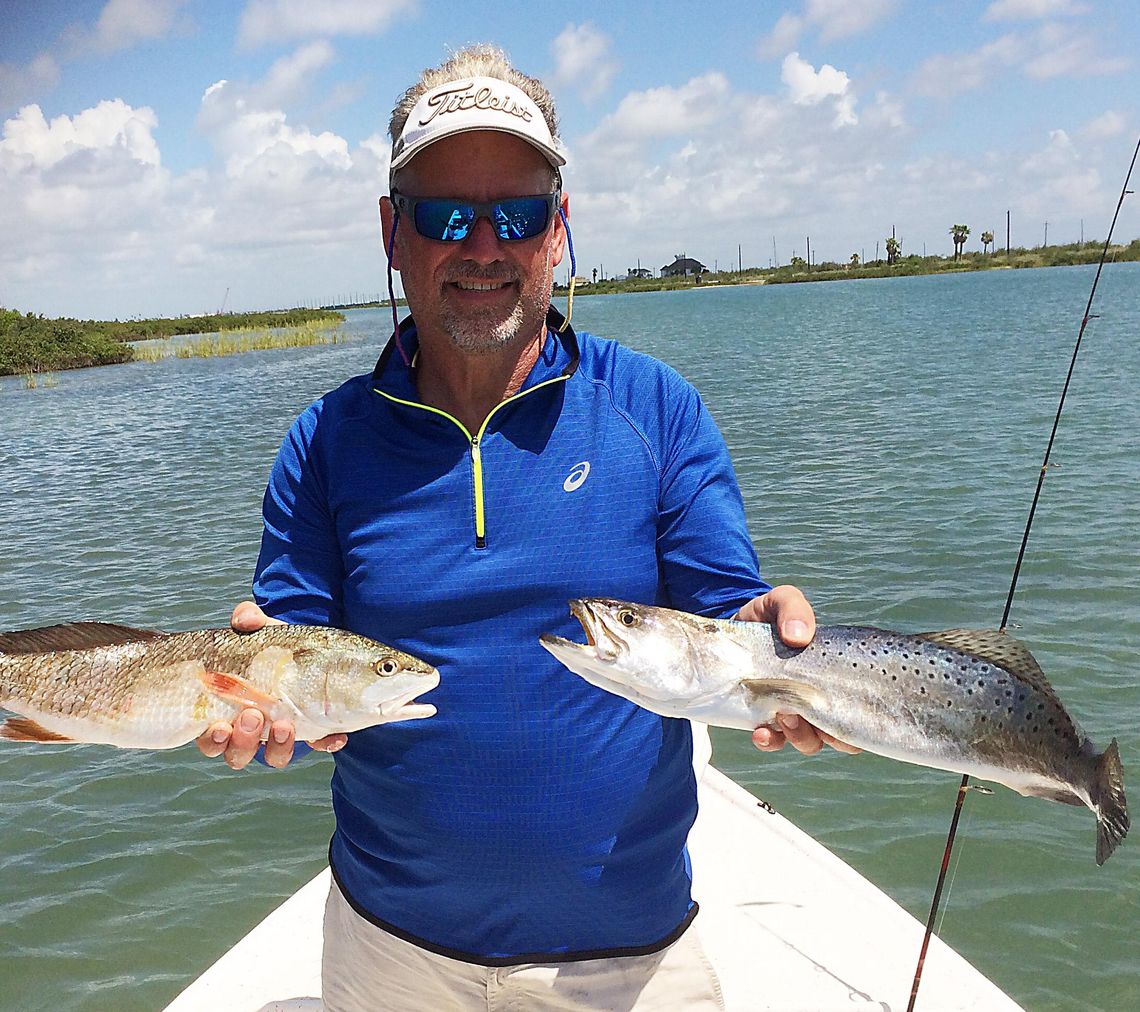It was cold and clear as we launched our boat. The day before was cold, wet and windy but we had caught fish. So low wind, no rain and sunny skies was a great improvement.
My neighbor, Tom Ray, and I launched my skiff as my son, Terry, unloaded his 19’ Mako bay boat. My brother, Wayne, joined Terry as his fishing partner.
Tom and I motored slowly down a subdivision canal where we had landed two good redfish the previous day. Terry and Wayne idled down another canal in the opposite direction.
Tom and I didn’t find much in our canal – small redfish and skipjacks. We quickly departed and followed the Intracoastal Waterway (ICW) about a mile east. Casting our Gulp shrimp on lead-head jigs against the rocky bank of a spoil island produced only a few small trout. It was the same area where we had caught some keeper trout in the ugly weather the previous day. But everyday fishing is a new day.
Why hadn't Terry and Wayne come to join us? Terry had caught dozens of trout where we were fishing the day before. I expected him to arrive right after we did. Finally, we saw his black and white Mako coming.
“Look what Terry caught,” shouted Wayne. I had no idea about his catch. The previous day he had hooked a tarpon in the subdivisions canal. Had he landed a tarpon?
Proudly, Terry held up a 27 inch snook. Wow! It was beautiful! Snook, a very warm water fish, are found in good numbers farther south near Port Isabel. But they are very rare in our area of the Middle Coast near Aransas Pass. Wayne had seen a few 16 inch Snook in his years of fishing the area — but never a big one.
“He fought like crazy,” shouted Terry. “He made two hot runs and stayed down deep.”
The Snook was the only bite they had in the little canal. But that one bite had made Terry’s day. He had his limit. The Texas snook limit is one fish between 24 and 28 inches.
The common Snook, often called Robalo or linesider (due to the distinct dark lateral line) are much sought after in Florida and most Central America countries. They are definitely tropical. Cold weather will decimate a population. They die at water temperature below 54 F. In January 2010 a cold snap resulted in a 42 percent decline in the snook population of southwest Florida.
If we had large populations of snook it would be my target saltwater species. My wife, Beth, and I caught big numbers of Robalo in Florida years ago. We both landed a fish over 30 inches.
They are unbelievable fighters. To me a snook is a combination of a flashy speckled trout, a powerful redfish and a leaping tarpon.
One guide that we fished with in Florida cast netted a live well full of live menhaden. Then we motored to a bay shoreline near Tampa that was thick with red mangrove trees. The guide began to toss handfuls of live baits to the roots of the mangroves. Soon the water was alive with huge splashes as the snook attacked the helpless baits. It was always an instant hook-up. Even an 18 inch fish put up a strong fight.
Terry and Wayne had never tasted Snook on the table.
“They are tops for eating,” I said as we neared Terry’s boat to shoot some photos. "Keep him separate from your other fillets today. You’ll love that fish fried or grilled.”
Snook can get very large. The world record is a 53 pound 10 ounce monster caught in Costa Rica. Snook are fished and sold commercially outside of the U.S.
To have snook you must have bays with estuaries connected. They are an estuary-dependent species. They young feed and grow in the shallow estuaries. As they grow they are not opposed to moving into freshwater rivers.
Several years ago Bobby Whiteside, his wife, Carolyn, Beth, and I fished some tropical rivers in Belize, C.A. Snook were abundant.
Snook feed primarily on small fish, but also on shrimp, crabs and other crustaceans. But Terry knows that they will also hit a soft plastic lure.








